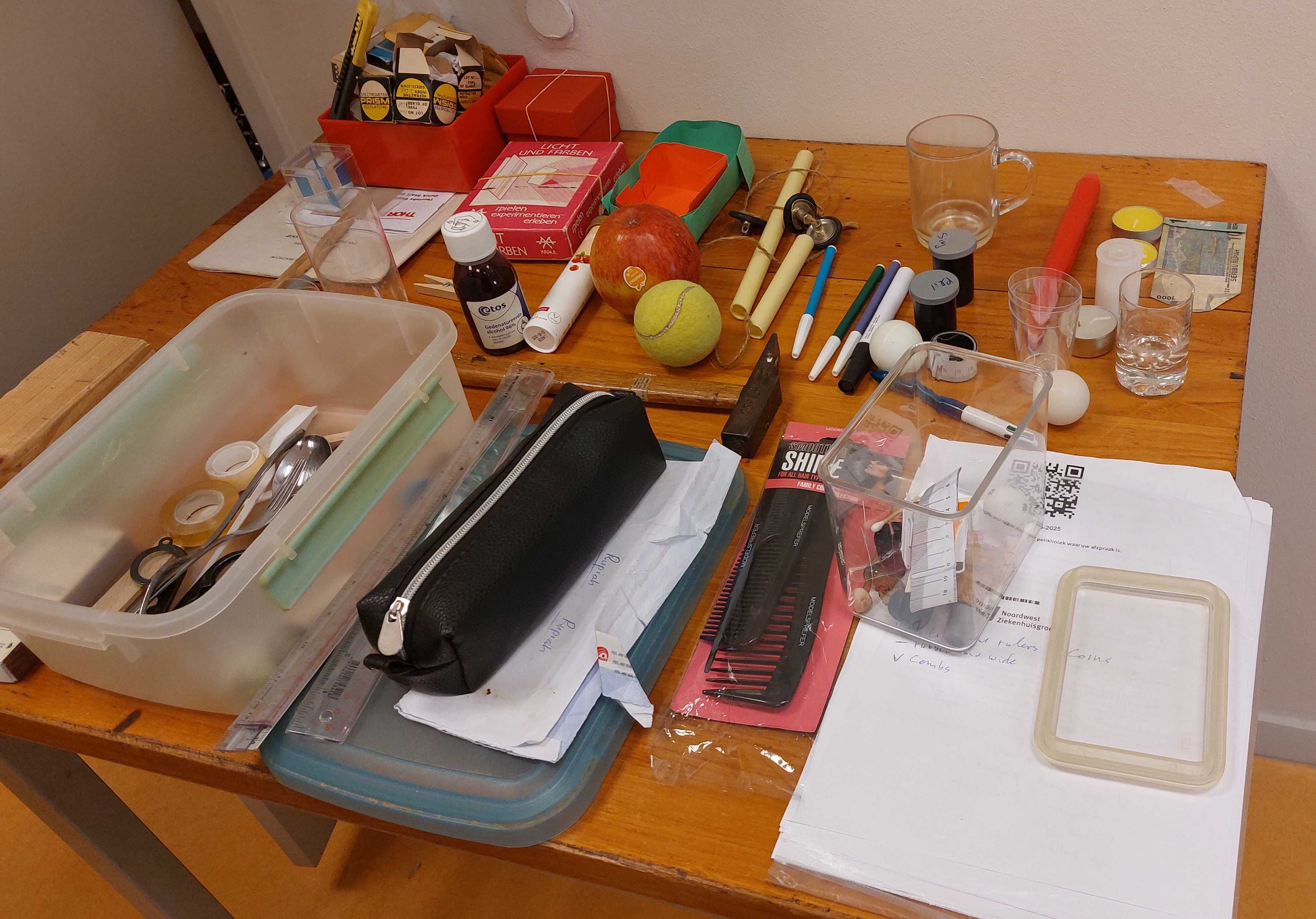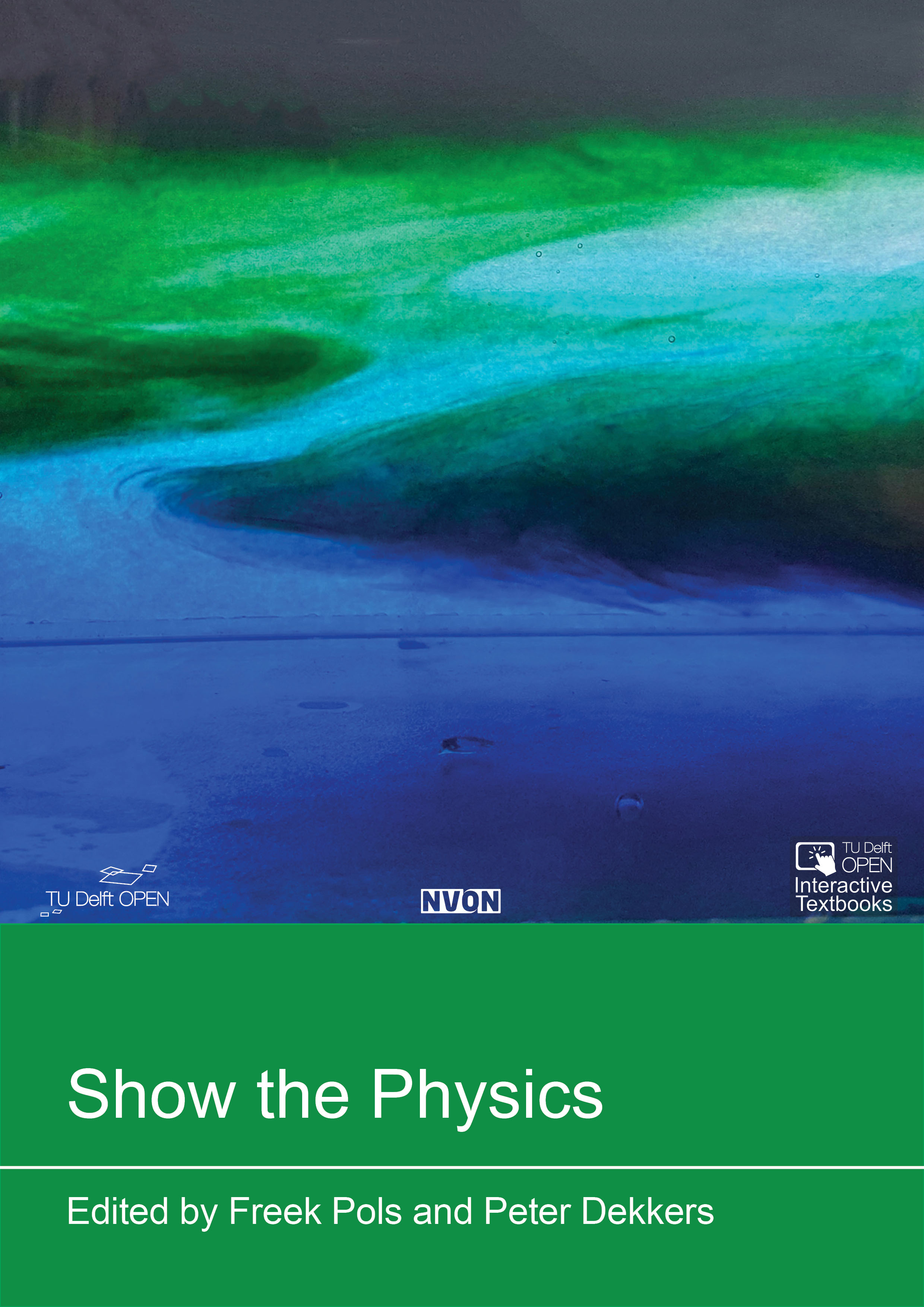Note
This page originates from Natuurkunde/Broekzakdemos.git, version: main
21. Introduction#
Suppose you are suddenly assigned to a bare classroom far from the location of your nice laboratory classroom, or you have to substitute in another class without preparation… Or you are teaching at a school without facilities… How can you still have a clear and exciting lesson?
This booklet presents a collection of small and quick demonstrations, which require no equipment beyond what is present in a common classroom (chalk, chairs, students, books, paper, student bags and common contents). The collection can be easily expanded. The nature of the demos is varied, some are to prove something, but most are to illustrate, visualize, or simulate. A few role-plays are included for when students are restless, cold, or sleepy, or for when their instructor needs a kick to get into a better mood after a late night of checking students’ papers.

Fig. 21.1 You only need a handful of materials to conduct a series of proper physics demos#
21.1. Proper demonstrations#
Rules for demonstrations are of course:
Visibility for all;
A clear learning objective, even if the demo is intended for entertainment, there must be something that can be learned;
Taking into account typical student conceptions and using these productively in the discussion;
Involvement, get students involved in predicting, observing, and explaining. There can be teacher questions or tasks which students answer individually in their notebooks or in pairs or groups in order to really force minds-on;
Emphasize the main points and leave out unnecessary details or discuss the details after the main points have been made.
This booklet provides mostly just bare ideas for demo’s and visualizations. For more extensive instructional tips and good questions to ask I refer to ’s Invitations to Science Inquiry (1987), a pdf can be found quickly with Google.
One could wonder whether these demonstrations and visualizations are still needed now that we have YouTube. I think that real demonstrations are still different from watching TV. It is important that students learn to recognize the physics phenomena in their own environment and realize that they themselves could actually perform the experiments.
Just to exercise our creativity, let’s take a glass of water. We can use that to demonstrate: properties of liquids, that the water level is always horizontal whichever way the glass is turned or tilted, adhesion (water higher on the sides), cohesion (the glass can be filled higher than the rim without overflowing), condensation (breathe on the side of the glass), sinking/floating (put something in the water), buoyancy, refraction (put a pencil in), a lens (put your finger in and it appears thicker), concentric water waves (dip in a pencil), sloshing (shake with resonance frequency), sounds dependent on water level (tick against the glass with a coin). One can easily get over 30 different demo’s just with a glass of water [].
Take any other object such as a chair or a table and you get many more demonstrations and visualizations. published 34 experiments with a plastic ruler. So, you yourself can add many experiments to this list. There are some standard objects that should always be in the bag or pocket of a physics teacher: a candle, matches or a lighter, two small stones of different sizes, a balloon that can be blown up, a ruler, some different coins, straws, a rubber band, a slinky, some strings, a scissor, and a laser pointer or flashlight.

Fig. 21.2 Looking for more and more advanced physics demonstrations? Take a look at Show the Physics, an online open access book with 99 physics demonstrations.#
